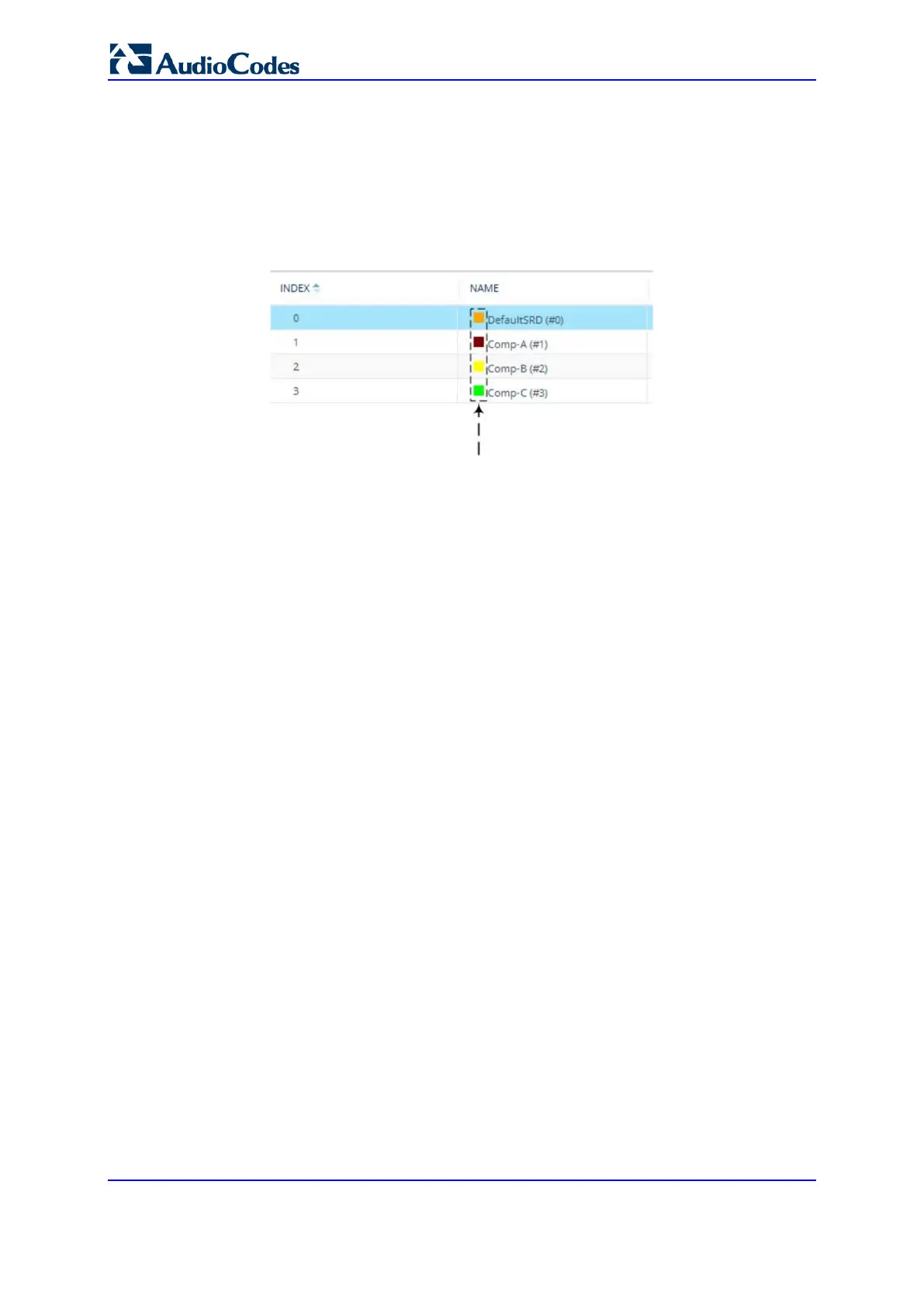User's Manual 326 Document #: LTRT-27045
Mediant 1000B Gateway & E-SBC
17.2.4 Color-Coding of SRDs in Web Interface
To easily identify your configured SRDs, the Web interface displays each SRD in a unique
color. The color is automatically and randomly assigned to new SRDs and is displayed in a
box alongside the name of the SRD in tables where the SRD is configured or assigned.
This is applied throughout the Web interface. The following example shows SRDs assigned
with unique color codes.
Figure 17-9: Color-Coding of SRDs
17.2.5 Automatic Configuration based on SRD
To facilitate configuration and eliminate possible flaws in configuration due to invalid
associations between configuration entities, the Web interface automatically configures
configuration entities based on SRD:
If you delete an SRD (in the SRDs table) that is associated with other configuration
entities in other tables, the device automatically deletes the associated table rows. For
example, if you delete an SRD that is associated with a Proxy Set, the device
automatically deletes the Proxy Set.
If you associate an SRD with a configuration entity in another table (i.e., other than the
SRDs table), the device automatically configures certain parameters of the
configuration entity according to the SRD or associated SRD. For example, if you add
a rule in the IP-to-IP Routing table and you select a Routing Policy, the 'Source IP
Group' and 'Destination IP Group' parameters list only IP Groups that re associated
with the SRD to which the Routing Policy is assigned (and IP Groups belonging to a
Shared SRD, if exists).
If your configuration setup includes only a single SRD, the device automatically
selects the SRD when adding related configuration entities. For example, when adding
an IP Group, the single SRD is automatically selected in the Add Row dialog box.
17.3 Configuring SIP Interfaces
The SIP Interfaces table lets you configure up to 82 SIP Interfaces. A SIP Interface
represents a Layer-3 network in your deployment environment, by defining a local, listening
port number and type (e.g., UDP), and assigning an IP network interface for SIP signaling
traffic. For example, if your deployment consists of an IP PBX in the LAN, a SIP Trunk in
the WAN, and remote far-end users in the WAN, you would need to configure a SIP
Interface for each of these SIP entities. You can configure the SIP Interfaces for the
different types of applications (SBC and Gateway). Gateway SIP Interfaces are required for
Tel-to-IP and IP-to-Tel calls. You can also configure various optional features for the SIP
Interface such as assigning it a Media Realm, blocking calls received on the SIP Interface
from users not registered with the device, and enabling direct media.
Each SIP Interface can be associated with only one SRD. As the SRD configuration entity
represents your VoIP deployment SIP network (Layer 5), you need to associate your SIP
Interfaces with a specific SRD in order to represent your Layer-3 networks. For most

